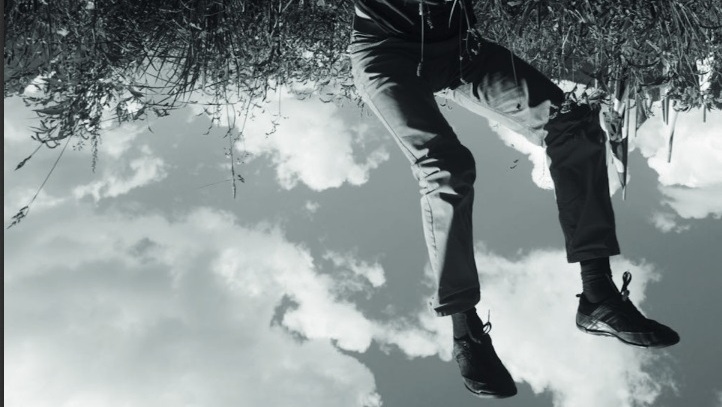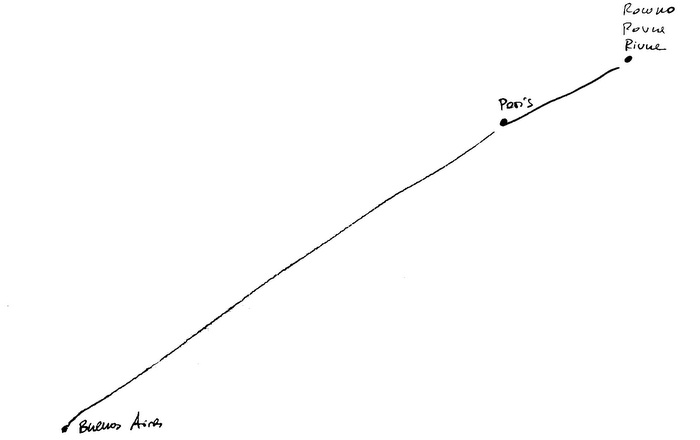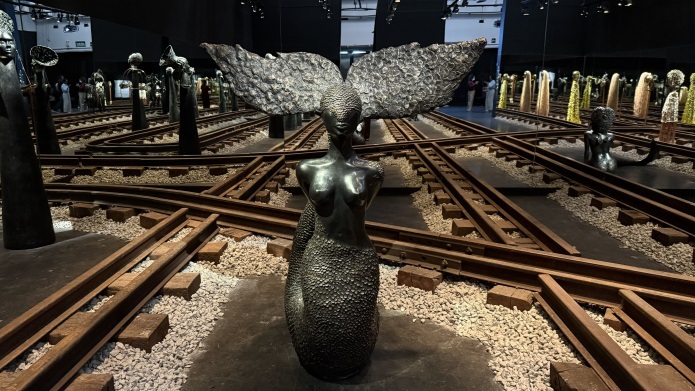We open the sunny autumn with (dis)orientation by and with Anderwald & Grond, Hoiss, Neunteufel, curated by Hubert Hasler. The text for the exhibition was written by Michaela Obermair.
Dis)orientation übersetzt von Denise Parizek
The concept of orientation is so diverse that it floats directionless in empty space without any context. It is only in context that it gains meaning and refers, for example, to a cardinal point, a gender or simply to up and down. It has a negative social connotation, if one does not know how to find one's way in life. It is precisely the interaction of orientation and disorientation that enables further development. The phase of disorientation forms a space of possibility in which old things can be questioned and new things are able to emerge.
Looking into the unknown
The mythological figure of Atlas was sent to the end of the earth and had the arduous task to stemp the heavens so that they would not fall down to earth again. He formed the transition, the axis, between heaven and earth. In addition to this leading role, he had the opportunity to look into the unknown, to imagine something new or to imitate the existing. Anderwald + Grond invited their protagonists to position themselves at the - for them subjectively chosen - end of the world. With their series "Atlases" the artist duo creates visual images of a reciprocal system between world perception and world creation.
"You can't see the country for the houses" is what Peter Hoiss calls the magnetic-looking installation. Soon the visitor will get the glue that the periscopes are aligned along the north-south axis. Soon one has also succumbed to a double orientation, since the view is redirected within the viewing tubes. A compass would not help here either. The (dis)illusion becomes (dis)orientation in the spatial work.
Real Reality
In order to orientate ourselves, we need clarity. To get clarity, a measurement seems to be a suitable instrument, preferably with scientific methods. The test series of Gerburg Neunteufl Pipina Schickaneder consists of grey tones, individually exposed, the exposure times can be read on the respective photo paper. All finely tuned, psychophysics comes to the fore: not all shades of gray are distinguishable to our eyes! The irritation of the eye is continued in the photograms. The visitor loses the focus and dive into a grey dimension in which she/he is in the game of geometry and colorimetry.
"Going right down to the last dirt is how the musician Molly McDolan describes the movement in predominantly impure tones. Together with her colleague Ana Inés Feola, she plays the piece "Name" composed by Pia Palme, in which "clean" and "wrong" intervals are worked out to give space to different sound spheres. Ephemeral transitions between composition and improvisation reinforce the acoustic perception of the baroque instruments. The hunting oboe, an instrument, contrary to its name, was only used in church, now resounds in the art space. An auditory space of possibility opens up.
(Des)Orientierung
Ruth Anderwald + Leonhard Grond, Peter Hoiss, Gerburg Neunteufl Pipina Schickaneder
Schleifmühlgasse 12-14
A-1040 Wien
gallery@12-14.org
fon +43 6767354910















